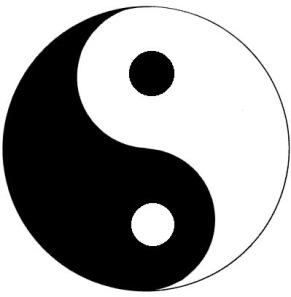My mother pointed me to a short piece on mindfulness meditation excerpted from Jack Kornfield‘s work (it probably came from one of his books, such as The Path of Insight Meditation).
He spends several paragraphs writing about the dharma of wisdom and about impermanence, quoting a Buddhist sutra “Thus shall you think of this fleeting world.” He notes that when meditating, one is more likely to realize that everything around us is in a state of change. It’s more noticeable, this changing, because the person meditating has become still and is observing closely.
Change is dharma’s first law: uncertainty and impermanence. The laws of science bear this out; entropy, evolution, constant change and motion everywhere.
Kornfield then does a good job of explaining to Westerners what Buddhists mean when they say “all life is suffering.”
“This brings us to dharma’s second law. If we want things that are always changing to stay the same and to get attached to them, we get disappointed, we suffer. Not because we should suffer–this is not something created to punish us. It is the very way things are, as basic as gravity. If we get attached to something the way it is, it does not stop changing, Trying to hold onto ‘how it was’ will only create suffering and disappointment.”
What could be clearer? We know we cannot wrestle a person or a place to the ground and pin it in place and have it remain unchanging for us. Without change, nothing can live.
What upsets people is that they are uncomfortable with the insecure feelings change tends to bring. Also, there’s that tendency to look for cause and effect, for blame, for control and certainty.
Thinking about thinking–as I have been lately–and consciousness and, to some extent, fear, I recognize I need to “relax with uncertainty.” That’s how Kornfield puts it. he says there is wisdom in insecurity because it is natural.
“Letting go does not mean not caring about things. It means caring for them in a flexible and wise way,” Kornfield writes. Sometimes, when I feel content and relaxed and able to “let go” of nagging and difficult and scary and challenging things, loved ones ask me whether I care or not. I do care. I recognize, though, that there are times no amount of caring can “fix” a problem. Sometimes, acceptance and encouragement and letting go work much better than controlling intervention.
A great deal of my poetry begins in a flexible, accepting “space” that recognizes, and embraces, uncertainty. I wish I could find myself in this Way more often.





